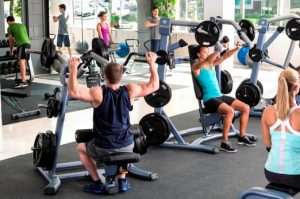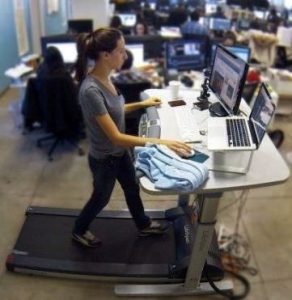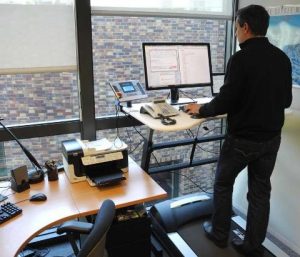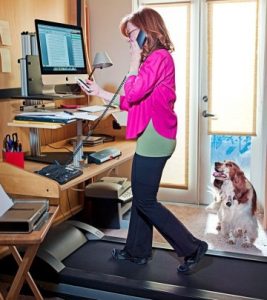sitting
Sitting versus Moving
Vocabulary
| trendy | crucially | treadmill |
| fad | constant | encourage |
| gather | rampant | sedentary |
| browse | virtually | conventional |
| expect | organism | period (3) |
| extent | average | life-expectancy |
| buff | extended | come as a surprise |
| advise | conserve | continuous |
| jog | negate | benefit (2) |
| basis | suggest | heart attack |
| at all | intensity | conductor (3) |
| likely | diabetes | count (3) |
| aisles | stand up | double-decker bus |
| climb | muscle | work shift |
| risk | workout | causation |
| stairs | wheel (2) | detrimental |
| wane | carry out | meta-analysis |
| wax (3) | involve | epidemiological |
| affect | at least | at least as |
| invoke | extensive | cardiovascular |
| merely | vigorous | ambulatory |
| effect | volunteer | correlation |
| attend | evidence | immobile |
| tend | calories | on a positive note |
| blame | appetite | perform (2) |
| reverse | vigorous | break up (2) |
| starchy | regimen | make a difference |
| glucose | conclude | blood-glucose |






Treadmill Desks
Winston Churchill knew it. Ernest Hemingway knew it. Leonardo da Vinci knew it. Every trendy office from Silicon Valley to Scandinavia now knows it too: sitting isn’t good for people; they ought to work standing up.
And not merely standing. The trendiest offices have treadmill desks, which encourage people to walk while working. It sounds like a fad. But it does have a basis in science.
The Sedentary Lifestyle
The sedentary lifestyle is rampant in the rich world. Most people there spend virtually their entire day driving a car, working at a desk, watching TV or browsing the internet (the few remaining hunter-gatherers on the planet meanwhile walk an average of 19 km a day).
Though all organisms tend to conserve energy when possible, doing it to the extent most Westerners do is unhealthy — so much so that it can reduce life-expectancy.
That should not come as a surprise: health experts have been advising people for decades to do more exercise.
Workouts are not Enough
What may be news to exercise buffs is that extended, continuous periods of sitting can negate any health benefits of 30-minutes of jogging, swimming or workouts in the gym, three times a week.
Research suggests that what people need is constant low-intensive activity. This can be so low that they might not be thought of as physical activity at all. Even just standing up counts, for it invokes major leg muscles that sitting does not.
Double-Decker Buses
The idea that standing and moving is healthier goes back to 1953 when Dr. Jerry Morris conducted a study on London double-decker bus employees. Conductors, who spend their work-shift standing, walking up and down aisles and climbing stairs, had half the risk of heart attacks of bus drivers, who sat behind the wheel.
But as the health benefits of exercise and vigorous physical activity began to become clear in the 1970s, interest in the effects of low-intensive activity waned.
Recent Studies
Over the past few years, however, interest has waxed again. In 2012, Emma Wilmot of the University of Leicester, in Britain carried out a meta-analysis on 18 epidemiological studies involving nearly 800,000 people.
She concluded that individuals who are least active in their normal daily lives are twice as likely to develop diabetes as those who are most active.
The immobile are also twice as likely to die from a heart attack and two-and-a-half times as likely to suffer cardiovascular disease as the most ambulatory. Crucially, all this seemed independent of the amount of vigorous, gym-style exercises that volunteers did.
It’s important to note that correlation does not necessarily mean causation. There is other evidence however suggesting inactivity really is to blame for these problems. One is that performing to a task (anything from watching television to playing video games to reading) while sitting extensively tends make people eat more — while burning less calories than if they were more physically active.
General Advice
On a positive note, this research also suggests detrimental effects can be reversed by small amounts of low-intensive movements. A study found that breaking up prolonged periods of sitting with two minutes of walking every 20 minutes made a big difference. After eating a starchy meal, volunteers who had followed this regimen had blood-glucose levels almost 30% lower than those who had remained seated.
This suggests that simple bodily movement (standing up and down, walking around, and the like) is least as, if not more, important than thirty-minute, conventional exercises (though ideally, both should be done) — and certainly more than being completely sedentary.
Questions
1. The notion that prolonged sitting is unhealthy is new. True or false?
2. What has been happening in some offices? What kind of companies are they?
3. Describe the modern lifestyle. Has it changed over time?
4. Exercising in the gym, three times a week is enough to keep a person fit and healthy. Is this entirely right, mostly right, in the middle, yes and no, partially right or completely wrong?
5. When was the first study in the relationship between physical activity and healthy made? What were the results? Why was it largely forgotten?
6. Have there been extensive scientific studies more recently? What were their results? Was there a caveat?
7. Scientists say people with sedentary lifestyles are doomed to having poor health. Is this correct or incorrect?
A. The findings of the researchers surprise me. Yes or no?
B. Do you know of any company or organization with stand up or treadmill desks?
C. Describe the work habits of employees in your industry.
D. Do you think employees and people in general should do things differently?
E. How do or would companies and managers feel about sitting versus moving around? Has your boss or company made any recommendations regarding health and fitness?
F. What may happen in the future?

